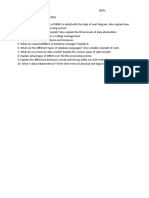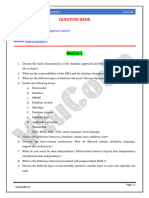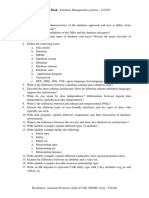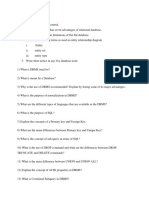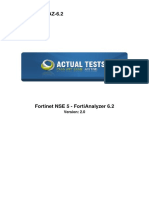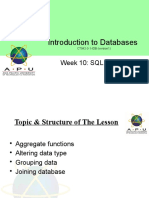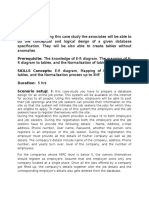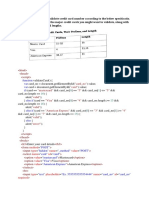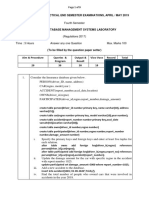CE0317- Database Management System
Assignment-1
1. Define: Data, Database, DBMS, Data Redundancy.
2. Explain the purpose and application of DBMS. OR Explain the purpose of the
database system.
3. List the benefits of database approach.
4. Describe various disadvantages of the file system compared to Database
management systems.
5. Explain different database users.
6. What are the responsibilities of a DBA? OR List the major functions performed
by DBA.
7. What is schema and instance? explain with an example.
8. Explain three level architecture of database systems. OR Explain three levels
of data abstraction in DBMS.
9. Explain database system architecture with diagram in detail.
10. What is data independence? Explain the difference between physical and
logical data independence with examples.
Assignment-2
1. What are domains, relations, and attributes in the relational model?
2. List and explain the fundamental operators of relational algebra.
3. Define functional dependency and differentiate between trivial and non-trivial
FDs.
4. How is the closure of a set of functional dependencies computed, and why is
it important?
5. What is the syntax and purpose of the join operation in relational algebra?
6. How do union, intersection, and set difference work in relational algebra?
7. What are 1NF, 2NF, and 3NF, and how do they differ in terms of
normalization?
8. Explain multivalued dependency and how it relates to 4NF and 5NF.
9. How does one identify and handle redundancy using functional
dependencies?
10. What is the difference between 4NF and 5NF in terms of normalization
criteria?
Assignment-3
1. What are the ACID properties of a transaction, and why are they important?
2. Explain the concept of serializability in transactions and how it ensures
consistency.
3. How can you test for the serializability of a set of transactions?
4. What is the Two-Phase Commit protocol, and how does it ensure atomicity in
distributed transactions?
5. Describe log-based recovery and its role in maintaining transaction atomicity.
6. What issues arise with concurrent execution of transactions, and how are they
addressed?
7. Explain the two-phase locking protocol and how it prevents concurrency
problems.
8. What is a deadlock in the context of transactions, and how can it be prevented
or resolved?
9. Define discretionary access control and how it differs from mandatory access
control.
10. What is data encryption, and how does it contribute to database security?







